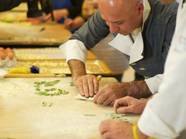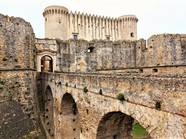The Fellini Foundation, which acquired the book two years ago, says the drawings ''show the erotic and playful side'' that ran through Fellini's screen work.
Fellini, a former cartoonist whose visually striking masterpieces typically combine memory, dream and fantasy, recorded his dreams every morning on the advice of a psychoanalyst.
Some of the 400 sketches - said to be ''brightly coloured, fully formed and quite explicit'' - found their way onto the screen. When they were exhibited for the first time at last year's Rome Film Festival, Fellini buffs were delighted to see they showed many of the germs of the great film-maker's creations.
Fellini, the maker of classics like La Dolce Vita, Eight and a Half and Amarcord, started drawing his dreams after meeting a Junghian psychoanalyst in 1960.
He kept up the habit until 1990, three years before his death.
In 1984, Fellini said: ''Talking about dreams is like talking about movies, since the cinema uses the language of dreams; years can pass in a second and you can hop from one place to another''.
''It's a language made of images. And in the real cinema, every object and every light means something, as in a dream''.
Compared to the exhibit seen in Rome, the Rimini show has been beefed up with archive photos and film footage supplied by ANSA, Bologna's Cineteca and the Reporters Associati photo agency.
The Book of Dreams is on display at Rimini's Castel Sismondo until March 16.
(ANSA NEWS)
Fondazione Federico Fellini via Oberdan, 1, Rimini - tel. 0541.50303; fax. 0541 57378
[email protected]
www.federicofellini.it








































